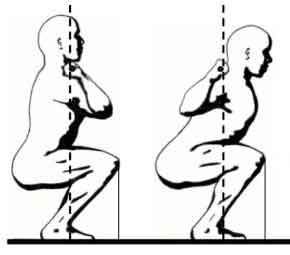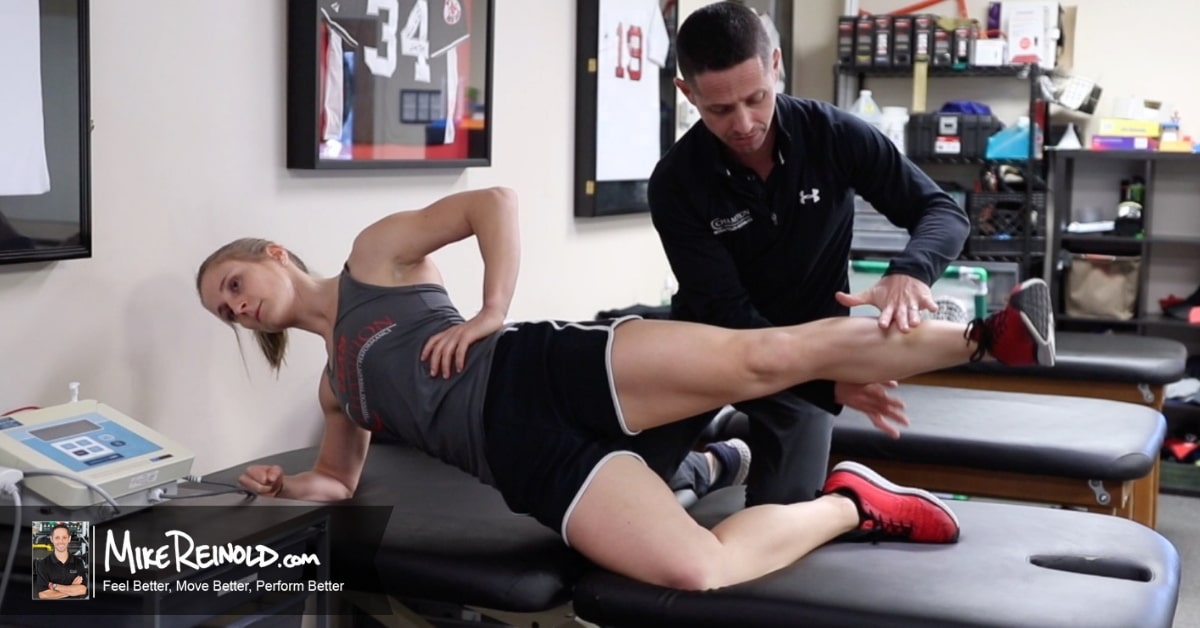A common concern while performing the squat exercise involves the strain on the lower back, especially when squat technique is poor or when dealing with low back pain. It is often advantageous to alter the squat technique to reduce strain on the back so that a broad range of people can perform the exercise and it can be included in rehabilitation programs.
Frequent debates exists between the the front and back squat techniques, and there are certainly pros and cons for both. But if you are worried about the health of the low back, realize that squat technique alters muscle activity of your back extensors and this may have implications on low back pain.
Squat Technique Alters Back Extensor Muscle Activity
A recent study in the Journal of Strength and Conditioning Research reports that there is a significant difference in the EMG activity of the erector spinae while performing the front and back squat. The study actually was designed to compare the EMG activity during isometric and dynamic trunk exercises, not squat technique, but I couldn’t help but focus on this other finding from the study. While the authors actually noted that the front squat may be the preferred squat technique due to the greater amount of erector spinae activity, I actually thought the opposite, at least for the novice lifter or person with history of low back pain.
The examiners compared erector spinae EMG activity between the front squat, back squat, military press, prone bridge, and prone superman exercise. The front squat produced ~25% greater erector spinae EMG activity than the back squat. What was even more interesting to me was that the front squat had no significant difference in erector spinae activity compared to the superman exercise.
Remember, the superman exercise has been shown by McGill to produce up to 6000 N (over 1300 lbs) of compressive force to the spine due to the activity of the back extensors!
Squat Technique and Low Back Pain
Erector spinae strength is needed to help prevent low back pain, several studies have been published that show that people with low back pain have issues with erector spinae strength and nueromuscular control. However, this is an area that I have frequently seen overworked and often times leads to greater issues with low back pain. I feel that we often times try to hard to advance or back extension exercises. McGill has shown that exercises like the previously mentioned superman exercise and the classic Roman chair back extension exercise produce excessive amounts of compressive loads on the lumbar spine.
I am a believer that most people don’t need to progress their extension exercises to this advanced of a technique. Basic exercises such quadruped hip extension and bird dog produce an adequate amount of EMG activity while saving the spine from excessive compressive loads. I’ve published examples of basic back extension exercises in the past.
Furthermore, we can’t neglect that many people suffer from low back pain due to chronic postural adaptations and a subsequently low ratio of erector spinae to rectus abdominis strength. Overloading these people with aggressive extension exercises are only going to fatigue the extensors more and cause more low back pain.
Just Another Factor to Consider When Choosing Squat Technique
To that extent, I would consider the back squat to be the preferred squat technique over the front squat for people with low back issues until the person demonstrates excellent back extensor strength and core stability. Realistically, many everyday people may never get to this point, and there may be other reasons why you may need to perform the front squat (i.e. shoulder pain, knee pain, etc.), but at least take the results of this study into consideration when designing your programs. If you prefer to perform the front squat, at least make sure that the person has a solid base of back extensor strength and core stability before progressing to the squat.
What Are Your Thoughts on Squat Technique?
Where do you stand in the front verses back squat technique debate? What do you take into consideration when selecting which squat technique to use in your programs?





